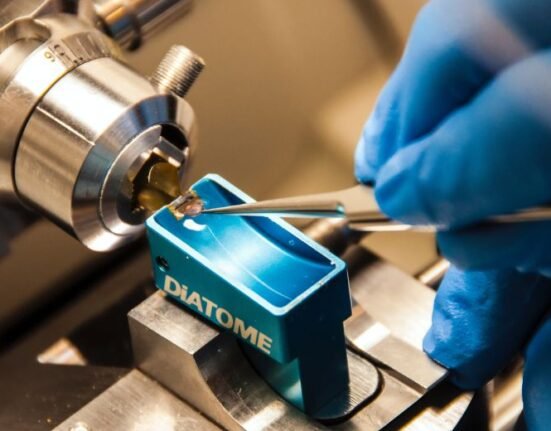HQ Team
March 11, 2024: Swimming robots — smaller than grains of sand — have enough computing power to perform a task on their own without being guided by external signals, US electrical engineers reveal.
Soon they could have potential applications in the healthcare industry as these robots may be able to deliver drugs or track down pathogens.
If electrodes fitted into the tiny robots could sense electric fields, it might even enable them to communicate with one another and function cooperatively, according to engineers at the University of Pennsylvania.
“It’s awesome,” says Daniel Goldman, a physicist at the Georgia Institute of Technology who was not involved in the work. “Clearly, they’re putting together infrastructure so that one can start to make potentially autonomous, micro-scale robots.”
Marc Miskin, an electrical engineer at the University of Pennsylvania, whose group created the new bots, said making a microrobot autonomous required incorporating some sort of computer — and only in about 2020 did the size of the smallest computer shrink below one millimetre.
Minuscule power
Muiskin said making the microelectronics mesh with the robot’s mechanical systems was difficult, as was getting the whole thing to run on minuscule amounts of power.
They turned to David Blaauw, an electrical engineer and collaborator at the University of Michigan, who produced a microprocessor chip that measures roughly 100 micrometres wide and contains a mere 128 bits of programmable memory.
Maya Lassiter, an electrical engineer at the University of Pennsylvania, and colleagues took a wafer containing thousands of copies of the processor and built a small army of robots on top of them.
After depositing more materials on the wafer, Lassiter used standard lithography techniques to etch out the other parts of the robots, according to a statement.
As ultrathin appendages were difficult to make and wear out in a few weeks scientists designed a swimming microrobot that has no moving parts.
Electrodes attached
It measures about 300 micrometres long and 200 micrometres wide, roughly the size of a paramecium. Many microrobots walk around on dry surfaces using tiny legs.
In an experimental setting, instead of flippers, the researchers attached an electrode to each corner of the rectangular microrobot.
Setting the two electrodes on any side of the robot to different voltages produced an electric field pointing from one electrode to the other.
The field pushes the diluted hydrogen peroxide, a testing solution, one way and propels the robot in the opposite direction, toward the higher voltage electrode.
By varying the voltages on the electrodes, researchers could make the robot move forward or backward, slide sideways, turn, or even twirl.
‘Motion is data’
“Because of the simplicity of the 128-bit microchip, the robot runs on a mere 75 nanowatts—a couple of thousandths as much power as is consumed by a modern pacemaker,” according to the statement.
“The robot motion is, in fact, the data,” Lassiter said. The researchers confirmed the robots worked as programmed by varying the temperature and comparing the readouts with the values from a macroscopic thermometer placed in the solution.
Georgia Institute of Technology’s Goldman said the experiment was just a first step.
“Right now, the machines swim in a clean 2D environment, the micro robotic equivalent of the kiddie pool. To be more useful, they’ll have to navigate the much messier 3D real world.
“It’s going to be a lot of fun to watch (the researchers) confront the challenges of moving in complex, microscale environments,” Goldman said.
The researchers presented their findings at a meeting of the American Physical Society.





